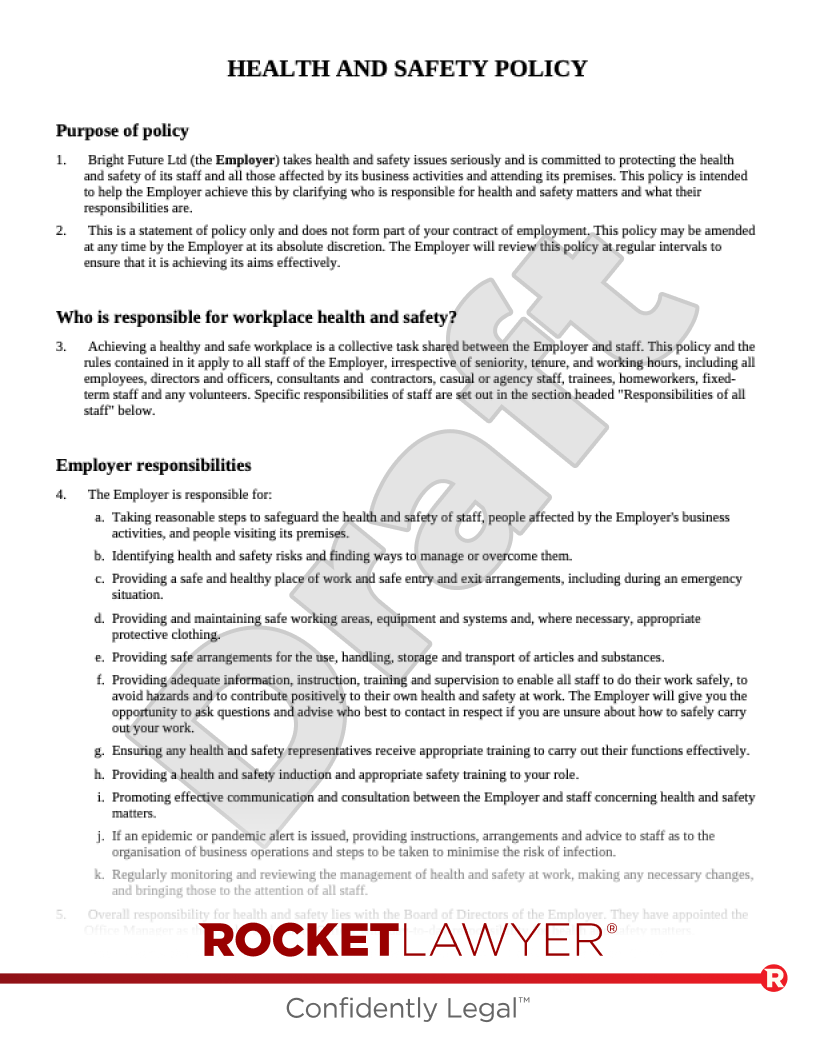What are the regulations that require employers to carry out risk assessments?
Health and Safety at Work Act 1974
This places a general duty on employers to ensure the health and safety of their employees in the workplace.
Management of Health and Safety at Work Regulations 1999
These Regulations contain the key requirements for employers specifically to carry out risk assessments.
Who is required to carry out a risk assessment?
Both employers and self-employed people are required to assess any risks created or posed in the course of their business. Measures for avoiding or mitigating any risks should be identified and implemented in accordance with health and safety laws.
Any business that employs 5 or more workers must record the main points of their risk assessment (ie what the hazards are, who might be harmed and how and what is being done to control the risks).
What are the additional protections for pregnant employees?
The Management of Health and Safety at Work Regulations 1999 sets out additional obligations for employers with pregnant employees. For example, implementing necessary measures to ensure that the risk of exposure to pregnant employees is avoided by temporarily adjusting the working conditions and/or the working hours of the pregnant employee.
Once an employer has been notified that an employee is pregnant, has given birth within the past six months or is breastfeeding, the employer must take steps to identify any particular risks and produce a risk assessment that addresses measures such as:
-
heavy lifting
-
standing or sitting for long periods without proper breaks
-
exposure to any harmful substances
For more information, read the Health and Safety Executive’s (HSE) guidance on risk assessments for pregnant employees.
How should a risk assessment be carried out?
There is no set method of carrying out a risk assessment, as every business will face its own particular types of risks. However, general steps that can be taken include:
-
identifying what can harm people in the workplace (eg trailing wires in offices or falls from heights in the building trade)
-
identifying who might be harmed and how (eg new employees who are unfamiliar with the layout of a building site)
-
assessing risks and deciding on appropriate controls, taking into account any controls already in place (eg by providing an induction of health and safety risks for new employees)
-
recording risk assessment details (this is a legal requirement for businesses with 5 or more employees, but all businesses should consider recording their risk assessment to ensure there is an audit trail)
-
reviewing and updating risk assessments (this should be done regularly—at least once a year or any time a new type or method of working is introduced)
What are the main types of health and safety risks in the workplace?
Employees working in high-risk sectors (particularly construction and agriculture) are at greater risk of being injured in the workplace than office workers. There are risks inherent in all industries so every business must take steps to avoid their workers coming to harm.
For more information on risk assessments, read the HSE’s guidance for England and Wales, the HSE’s guidance and Healthy Working Lives for Scotland. If you have any questions or concerns, Ask a lawyer.




